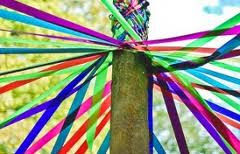1) What is the Easter story?
Easter is the story of Jesus' last days in Jerusalem before his death. The Easter story includes Maundy Thursday (the Last supper leading to the Eucharist), Good Friday (the day on which Jesus was crucified) and Easter Day (the day on which Jesus came back to life).
2) Where does the name “Easter” come from?
According to Bede, the English monastic historian, the English word Easter comes from the Anglo-Saxon name for the month of April, which was known as "Eostremonath"(the month of openings) in the AngloSaxon tongue and since Pascha was most often celebrated in Eostremonath, the English Christians began calling it "Easter".
3) Why do we have eggs at Easter?
Eggs are a forbidden food during Lent, making them a welcome return to the menu on Easter Day.
4) Why do we give eggs at Easter?
Easter is a Christian festival. For Christians the custom of giving eggs at Easter celebrates new life. Christians remember that Jesus, after dying on the cross, rose from the dead. They believe that, through his resurrection, Jesus defeated death and sin and offers people the promise of eternal life if they follow his teachings.
5) What were the first Easter eggs like?
The first eggs given at Easter were birds eggs. These eggs were painted in bright colours to give them further meaning as a gift. We still paint bird eggs today but usually only chicken eggs.
6) An Anglo-Saxon legend - the Easter bunny and eggs
An Anglo-Saxon legend tells how the Saxon goddess Eostre found a wounded bird and transformed it into a hare, so that it could survive the Winter. The hare found it could lay eggs, so it decorated these each spring and left them as offering to the goddess.
 |
| If you want to learn more about Easter, click the image above. |



















.jpg)


